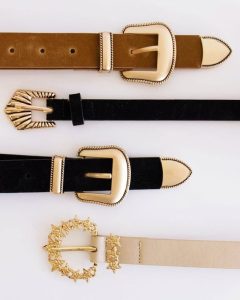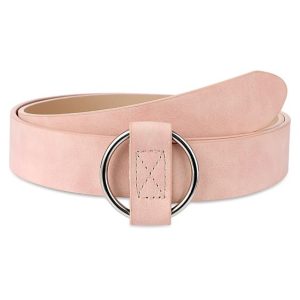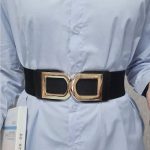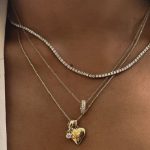Belts are a versatile accessory that can elevate an outfit and add polish. But wearing a belt that’s too big or too small can be uncomfortable and ruin the look. How to pick a belt size? So, how do you find the right belt size?
This guide will equip you with the knowledge and easy methods to determine your ideal belt size for a comfortable and stylish look.
Understanding Belt Sizing
Unlike clothing sizes that use letters (S, M, L), belt sizes are typically indicated in inches or centimeters. The size refers to the distance between the hole you use most often and the buckle end of the belt.
Here’s a breakdown of how belt sizing works:
- Men’s belts: Sizes typically range from 28 inches to 44 inches.
- Women’s belts: Sizes typically range from 26 inches to 40 inches.
Measuring Yourself for the Perfect Fit
There are two main methods to determine your ideal belt size:
Method 1: Using an existing belt that fits well
- Find a belt you already own that fits you comfortably.
- Lay the belt flat on a stable surface.
- Measure the distance from the hole you use most frequently to the end of the buckle (where the leather meets the buckle).
- This measurement is your ideal belt size!
Method 2: Measuring your waist
- Grab a soft measuring tape.
- Wrap the measuring tape around your waist where you typically wear your belts. For pants with belt loops, this would be around the loops.
- Keep the tape snug but comfortable, not too tight.
- Round the measurement to the nearest even inch.
Important Note: If you’re between sizes, it’s generally better to size up. A slightly larger belt can be adjusted to fit with additional holes, while a smaller belt might be too constricting.

Additional Tips for Choosing a Belt Size
How to pick a belt size? Here are some additional tips to consider when choosing a belt size:
-
Belt style: The width of the belt can influence sizing. A wider belt might require a slightly larger size to achieve a comfortable fit compared to a thinner belt.
-
Pant size: While not always accurate, you can use your pant size as a general guide. Typically, you’d add 2 inches to your pant size to estimate your belt size. However, it’s always best to confirm with the methods above for the most accurate measurement.
-
Try it on! Whenever possible, try on the belt before you buy it. This is the best way to ensure a comfortable and proper fit.
Repair and Maintenance
- Professional Care: Consult a leather specialist for repairs such as stitching or replacing buckles.
- DIY Touch-Ups: Use leather dye or polish to conceal minor scuffs or scratches on leather belts.
- Belt Organizer: Use a belt rack or hanger with individual hooks to prevent tangling and ensure easy access.
- Drawer Dividers: Store belts flat in a drawer with dividers to keep them organized and visible.
Maintaining Your Belt Collection
Once you’ve selected the perfect belt size, it’s essential to care for and store them properly to ensure longevity and continued style. Here are practical tips for maintaining your belt collection:
Cleaning and Storage
- Regular Cleaning: Wipe leather belts with a damp cloth to remove dust and dirt. Use a leather conditioner periodically to keep the leather supple.
- Avoid Excess Moisture: Keep belts away from direct sunlight and humidity to prevent leather from drying out or hardware from tarnishing.
Rotating Belts
- Even Wear: Rotate between belts to distribute wear evenly, extending their lifespan.
- Occasional Rest: Give leather belts a day of rest between wears to maintain their shape and prevent stretching.
Handling Belt Buckles
- Gentle Handling: Avoid excessive bending or pressure on belt buckles to prevent damage.
- Polishing: Clean metal buckles with a soft cloth and metal polish to maintain shine and prevent tarnishing.
Determining Belt Size
1. Belt Sizing Chart
- Reference Guide: Use an online belt sizing chart or one provided by the belt manufacturer.
- Match Measurements: Compare your waist measurement with the sizing chart to find the corresponding belt size.
2. Trying on Belts
- Direct Fitting: Try on belts in the store to ensure the right fit.
- Adjustable Options: Choose belts with multiple holes for flexibility in size adjustments.
Wearing Your Belt with Confidence
How to pick a belt size? By following these tips and using the measuring methods, you can find the perfect belt size for you. A well-fitting belt will not only enhance your outfit but also ensure a comfortable and confident look throughout the day.
Whether you’re rocking a classic leather belt or a trendy woven style, the right fit will make all the difference. So, grab a measuring tape or your favorite belt, and get ready to find your perfect fit!

Consider Belt Width and Other Factors
- Width Variation: Determine if you prefer a slim, medium, or wide belt based on personal style and clothing choices.
- Fit with Belt Loops: Ensure the belt width fits comfortably through the loops of your pants or skirts.
- Check Sizing Information: Review product descriptions for specific sizing guidelines and customer reviews.
- Return Policies: Confirm return options in case the belt does not fit as expected.
- Custom Sizes: Explore brands offering custom-made belts for precise measurements.
- Stretch Belts: Opt for stretch belts for added comfort and flexibility.
- Testing Fit: When trying on a belt, fasten it on the middle hole for flexibility.
- Movement Test: Ensure the belt remains comfortable while sitting, standing, or moving.
Tips for Specialty Belts
1. Fabric and Woven Belts
- Spot Cleaning: Follow care instructions for woven or fabric belts to preserve colors and patterns.
- Air Dry: Allow fabric belts to air dry completely before storage to prevent mold or mildew.
2. Stretch Belts
- Gentle Washing: Hand wash stretch belts in cold water with mild detergent, then lay flat to dry.
- Avoid Heat: Keep stretch belts away from direct heat sources to prevent shrinking or damage to elastic fibers.
Conclusion: Enjoying Your Belt
How to pick a belt size? Finding the right belt size enhances comfort and style. By measuring your waist, consulting sizing charts, considering belt width, and exploring online and specialty options, you can confidently select belts that complement your wardrobe and ensure a perfect fit.
Take care of your belts by storing them properly and cleaning them as recommended to maintain their quality and appearance.





